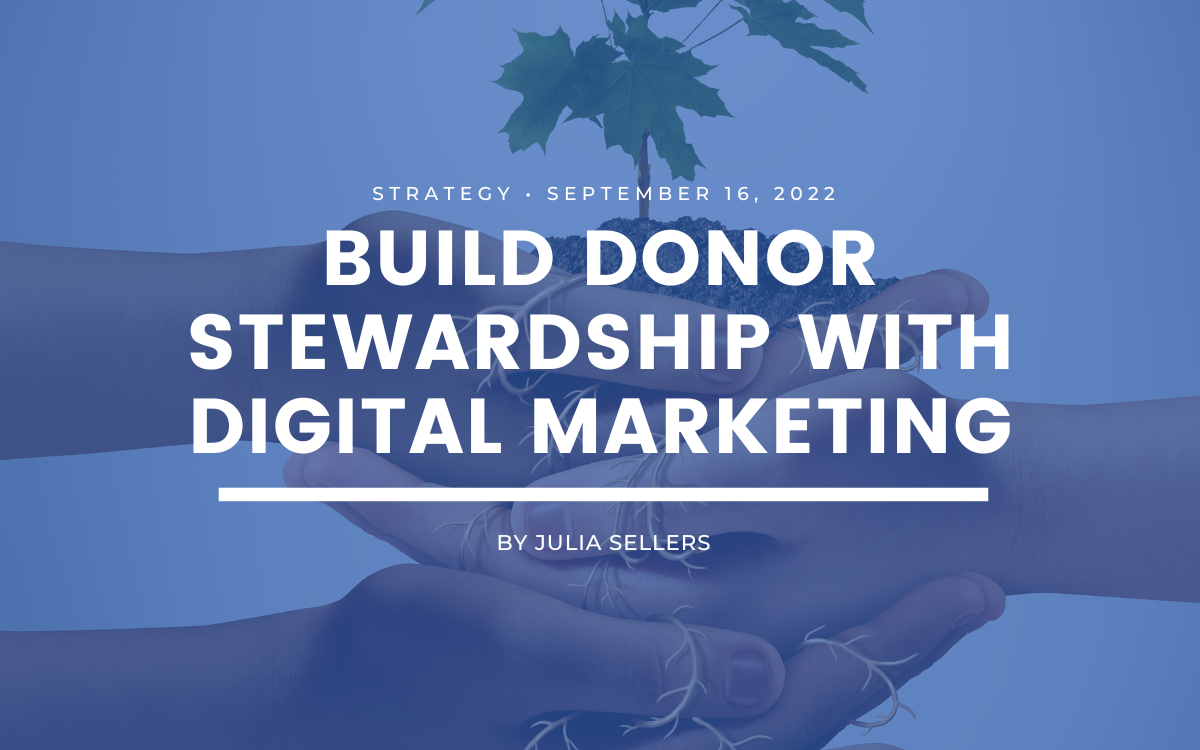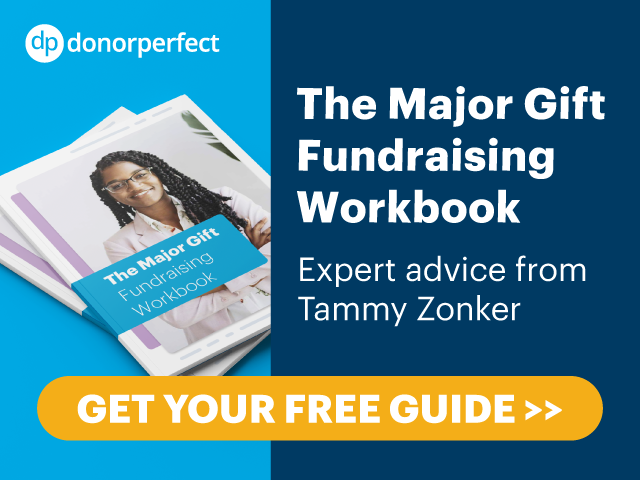Build Donor Stewardship With Digital Marketing
4.2 min to read ✭ Learn how to build donor stewardship through digital marketing. This blog walks through the 5 stages of donor stewardship.
Donor stewardship is essential for nonprofit development and reaching organizational goals — repeated interactions with donors beyond their first donation foster future investment in your mission. According to a Neon One report, recurring giving accounts for 15 percent of nonprofit industry giving. However, nonprofits have a 90 percent retention rate after onboarding a donor into recurring giving.
Create A Recurring Giving Plan
What is donor stewardship?
Donor stewardship is relationship building. You don’t just make a friend the first time you meet them. Instead, we build friendships over time, nurturing conversations and interactions.
Stages of Donor Stewardship
Stage 1: Acknowledge and track donors’ gifts
Everyone loves to know that their socially conscious actions make a difference. Showing donors how their efforts trigger mission impact sets the tone for your team. Your organization has started a conversation with the donor and warms them up for further messaging.
Setting up a donor database to filter donor information will allow your stewardship team to see how the donor wants to engage with your organization. It also allows your team to segment donors into preferred audiences for future emails and messaging.
Don’t forget to include a notes section within the database for donor stewardship teams to write notes about previous interactions with a donor.
Stage 2: Send a thank you
Thank-you notes will never go out of style. It’s a physical action that will provide a personalized message to each donor.
Messages can show their gift’s impact on the community you serve. It also allows your organization to reinforce brand messaging about your mission.
Thank-you notes can also come from unexpected, thoughtful gratitude like a birthday card to your donor. There are tons of digital generated, handwritten cards that you can send out to automate the process!
Stage 3: Learn how your donors want to be recognized
Donations of $5 or $5 million should be acknowledged. According to Blackbaud Institute, the average donation in 2021 was about $813. Most organizations wouldn’t consider $800 a significant donor gift, but recognizing those average gifts or less than will build relationships and increase your recurring donor pool.
Tailor recognition to your donors’ persona based on their information in your donor database. Always make sure to get approval from donors before public recognition.
Recognition messaging creates an opportunity for the donor to share ways their audience can donate to your mission, as well as how to volunteer or attend an event.
Include donor recognition in your organization’s newsletters and annual reports, too!
Stage 4: Communicate Results
Acknowledging an individual donation doesn’t tell the whole story of how an organization achieves mission-critical goals. Sharing results with a big-picture perspective allows donors to see how their contribution directly impacts those they serve.
Use your organization’s key performance indicators (KPIs) to showcase how donations helped reach an organizational SMART goal.
Don’t forget the adage of “show, don’t tell” when cultivating your donor stewardship messaging. Data share the results, but use a story of an individual in your mission to show the donor how they directly contribute to your work.
Stage 5: Invite Donors to Give Again
After you’ve warmed the donor up to expect communication from your organization beyond the initial donation thank-you message, cultivate your stewardship by inviting the donor to give again. Recurring giving can use the same formula of thanking the donor, recognizing the donor, and communicating results to the donor. Additional giving invitation segments on how a donor wants to be involved with your mission will steward how to target messaging to them in this cycle. Neon One reported that recurring donors are 6x more likely to leave an organization in their will or make a legacy gift. Steadfast and strategic messaging make that kind of relationship possible.
How to cultivate donor stewardship with digital strategies
1. Utilize social media
Collaborate with your communications staff so all messaging fits into your organization’s communication strategy.
Social media recognition can be as simple as a daily or weekly shout-out to your latest donors. Include the donor’s name and share how their donation directly impacts your mission.
Include social media in your long-term donor strategy, too. Have communication teams create an education and awareness campaign by using donor stories. They can showcase how recurring giving allows your organization to achieve broader organizational goals.
Make small donations easy transactions with social media. Put your call to action (CTA) directly in front of your ideal audience throughout any capital-giving campaign. We share more tips here on increasing monthly giving.
If donors share their social media handles, have staff create short videos thanking the donor by name for their gift. It will be unexpected communication that can lift their day.
Enhance Your Overall Digital Presence
2. Segment donors to create personalized experiences
Your donor database can do a lot of heavy lifting for creating personalized experiences for donors. As donors filter in, you’ll receive data on their giving practices and demographics. Donor databases have email automation that will save your team time in fulfilling each step in the donor cycle.
Donors who have designated their gift for a specific program can receive invites to events centered on that program development, such as volunteering or working with those you serve.
Audience segmentation also allows your donor stewardship team to survey a specific audience about the type of messaging they’d like to receive regarding future mission endeavors. This feedback loop means your team doesn’t have to wait for a recurring gift to learn more about how a donor wants to stay involved. In addition, your group can use our tips for writing the best fundraising campaign email.
Donor stewardship teams can also segment donors by gift size or communication preference. Every steward doesn’t need to comb through every donor profile to reach their audience for a specific program or giving campaign.
Build A Donor Stewardship Team
A designated donor stewardship team allows your organization to set clear goals with onboarding new donors, increasing recurring donors, and interacting with major donors.
Donor stewardship teams should include your donor relations leaders and principal gift officers. Board members and volunteers can also provide perspective to ensure all donor stewardship cycles fulfill the organization’s mission.
Create a donor stewardship guide with organization policy and best practices. This guide includes clear designations for each member’s efforts, so everyone knows their objective, and there is no overlap or gap in donor communications.
Community Boost collaborated with BRAC USA to highlight their work empowering people in poverty. First, we segmented donor audiences based on their last gift amount. Then, we created ads with impact metrics lined up with a donor’s last gift. For example, if a donor’s previous offering was $100, then targeted messaging told them the impact of $100 could be an end-of-year donation. As a result, BRAC USA’s had a 3x ad spend return.





